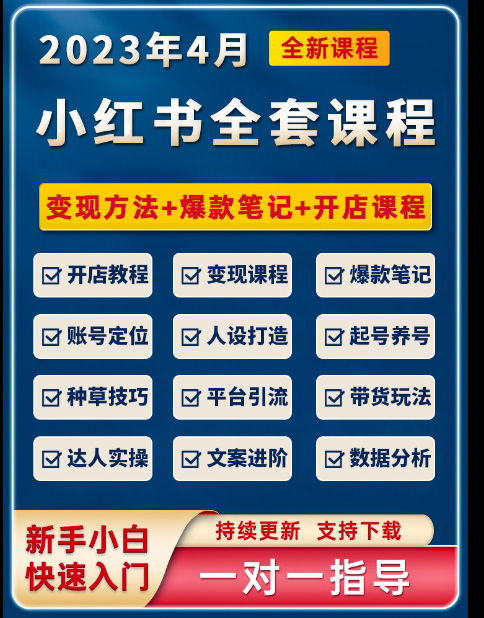眉山拼多多电商运营培训多少钱

小红书培训教程运营
对于电商新模式的特征,《报告》分析指出,相较于传统模式,电商新模式更加擅长发现和满足消费者的潜在需求,通过视频等信息密度更大的表现形式,重构或创造了全新消费场景,满足个性化、多样化、多层次的消费需求,不断提升消费体验。In this regard, the Report points out that although the Internet demographic dividend has declined, China's electricity business is still in innovative development. According to the "2022 (First) China Live E-commerce Market Data Report" released by the Online Economic and Social E-commerce Research Center recently, from 2017 to 2021, the transaction size of the domestic live e-commerce market increased from 19.64 billion yuan to 2361.51 billion yuan, which is significantly higher than the overall growth rate of online shopping transaction volume. This indicates that new models such as live e-commerce are still developing rapidly
其实,对水果分级分销的方式在果业市场应用已久,不仅能让消费者享受到不同价格和品质的服务,也有利于农产品优质优价的实现,创造更多价值收益。电商的出现对产业发展并非坏事,相反,正因电商跨地域销售和流通的优势,很多原本难以打开市场的特色优质水果能够快速直接地进入消费者的视野,让远在千里的人们也能品尝到其独特风味。对产地来说,直供水果到电商市场,可以减少流通环节、降低流通损耗,能让果农获取更多收益。For some consumers, buying fruits on e-commerce platforms is not only about taste, but also about appearance and service. Therefore, they tend to prefer large fruits with good fruit shape, high sweetness, and even fruit color. However, agricultural production is not an industrial assembly line and is influenced by factors such as lighting conditions, nutrient absorption, and management levels. Even fruits of the same variety may have quality differences when grown. Therefore, when sold from the place of origin, similar fruits will be divided into different levels based on their appearance, sugar content, size, etc., and then distributed to different end markets. Some fruits may not look as good, such as being frosted during growth, being bumped during picking, or experiencing short exposure to sunlight, resulting in less pigmentation of the skin. Therefore, compared to some well grown fruits, they are sold at a lower price. But if the flesh is not affected, there is not much difference in taste. Some e-commerce platforms have taken a cost-effective approach to selling such fruits, occupying a place in the consumer market.
在中国社会科学院经济研究所教授杨虎涛看来,从发展路径上看,直播、短视频等形式已成为电商市场的标配。他认为,全域兴趣电商的优势,主要在于平台在匹配需求、激发需求和释放需求的效能上更具一体化特征,所促成的不只是用户兴趣购物,也能够极大地满足用户主动购物需求。因此,平台可以更好地提供产品和服务,提升消费者的消费体验,有助于释放更多消费潜能,促进电商平台健康持续发展。According to Yang Hutao, professor of the Institute of Economics of the Chinese Academy of Social Sciences, from the perspective of development path, live broadcast, short video and other forms have become the standard configuration of e-commerce market. He believes that the advantage of global interest e-commerce lies mainly in the platform's more integrated performance in matching, stimulating, and releasing needs, which not only promotes user interest shopping, but also greatly satisfies users' active shopping needs. Therefore, the platform can better provide products and services, enhance consumers' consumption experience, help unleash more consumption potential, and promote the healthy and sustainable development of e-commerce platforms.
信航电商学院现有多个教学分校区,师资力量雄厚,在工业机器人、大数据、电商运营、电商美工、跨境电商、室内设计、广告设计、平面设计、UI设计、电子商务、模具设计、网页设计、软件开发、网络工程、人力资源管理、财务会计等职业技能教育领域,云光拥有雄厚的实力。是目前厦门规模较大、师资力量较雄厚的厦门培训机构。Xinhang E-commerce College currently has multiple teaching campuses with strong teaching staff. Yunguang has strong capabilities in vocational skills education fields such as industrial robotics, big data, e-commerce operations, e-commerce art, cross-border e-commerce, interior design, advertising design, graphic design, UI design, e-commerce, mold design, web design, software development, network engineering, human resource management, financial accounting, etc. It is currently a relatively large training institution with strong teaching staff in Xiamen.
比如,淘宝在国内市场推出自己的快时尚服饰店“ifashion”,在海外阿里也上线跨境快时尚电商品牌AllyLikes,以及快时尚电商平台Miravia。此外,京东也于之前推出过“京东大时尚”以期打造时尚百大标杆品牌。至于拼多多,虽然没有在国内发力快时尚,但在海外大杀四方的TEMU恰恰是以快时尚服装品类为根基。In the past, the positioning of fast fashion was between high-end brands and mass brands. Nowadays, fast fashion is extending towards both cost-effective products and high-end brands. The former is a manifestation of e-commerce platforms exchanging prices for the market, while the latter is a necessary choice made by traditional fast fashion brands to cope with competition and maintain growth.

